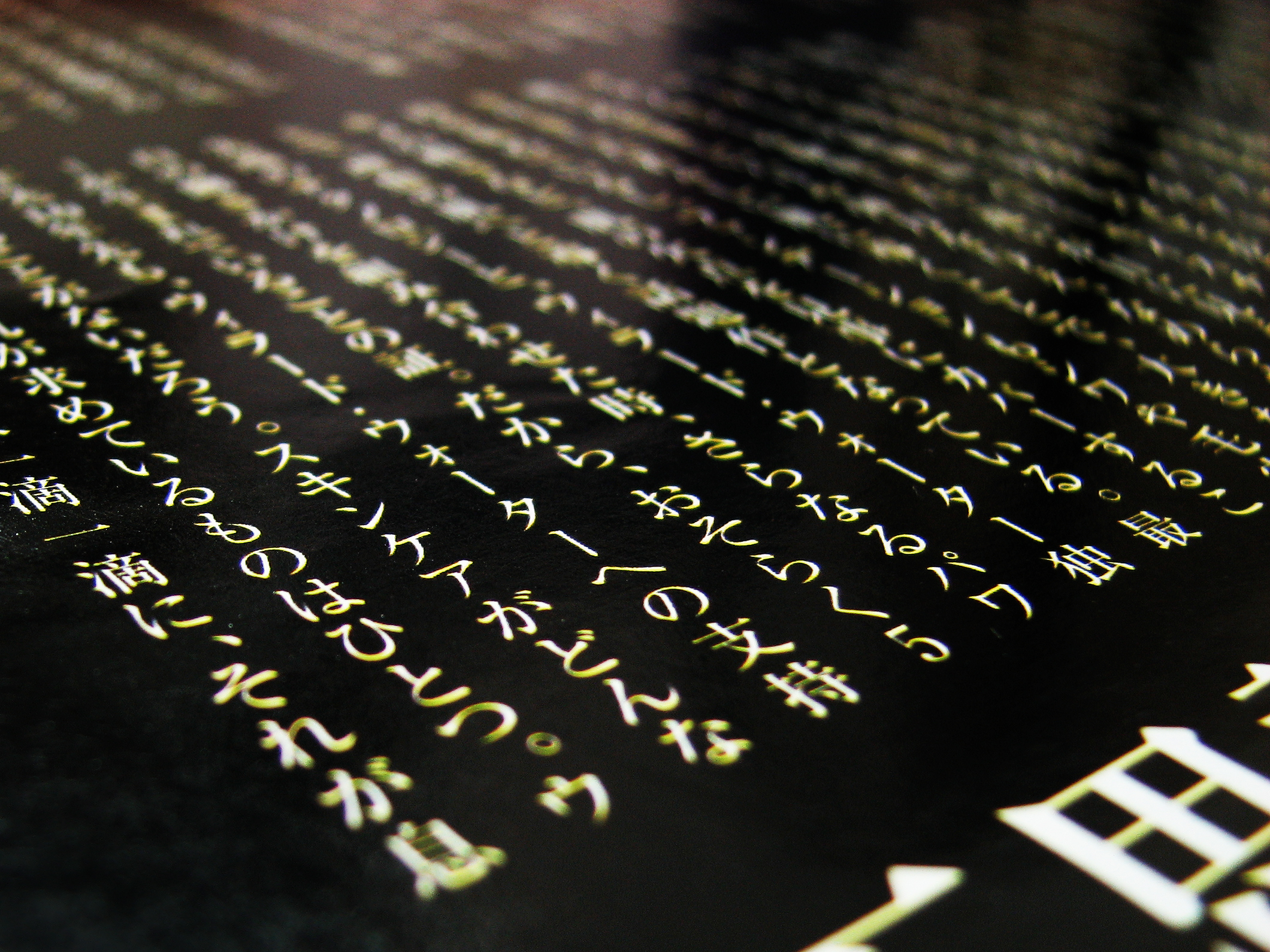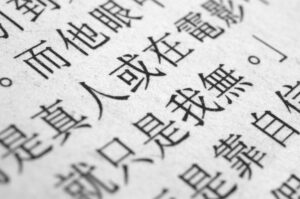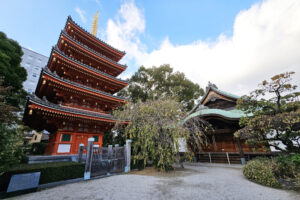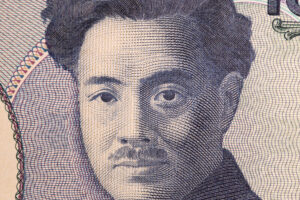The Japanese language, with its unique phonetic characteristics and intricate writing systems, is a tapestry woven from diverse historical influences. This article embarks on a journey through the origins of the Japanese language and its writing systems, examining the interplay of culture, geography, and history that has shaped this fascinating language. From its ancient roots to modern adaptations, the evolution of Japanese reveals not only linguistic development but also the profound impact of cultural exchanges and social changes over centuries.
Unraveling the Ancient Roots of the Japanese Language
The origins of the Japanese language, or Nihongo, are somewhat enigmatic, shrouded in theories and linguistic hypotheses. Many linguists categorize Japanese within the Japonic language family, which is distinct from other language families in Asia. The earliest evidence of the language dates back to the 8th century, found in texts such as the "Nihon Shoki" and "Man’yōshū." However, these texts were written in a script influenced by Chinese characters, making it difficult to pinpoint the language’s earliest spoken forms.
Linguists have proposed various theories regarding the language’s origins, including connections to the Altaic languages or the Austronesian languages. However, no consensus has been reached, and the true root of Japanese remains elusive. The language likely evolved from a mixture of indigenous dialects, influenced by interactions with neighboring cultures over thousands of years. These interactions fostered the development of a unique linguistic identity, distinct from other East Asian languages.
Phonologically, Japanese has a system that includes five vowel sounds and consonant-vowel syllables, contributing to its melodic quality. This simplicity in structure contrasts with the complex consonant clusters found in many other languages, showcasing a fundamental characteristic of Japanese phonetics. The absence of tones in Japanese further sets it apart, allowing for a different form of expression and communication.
The early Yamato people, who inhabited the central regions of Japan, played a critical role in the formation of the language. Their dialects may have formed the basis for what we now recognize as standard Japanese. The geographical isolation of the Japanese archipelago allowed for these dialects to develop independently, further enriching the linguistic landscape of the region.
Archaeological findings, such as pottery and tools, indicate that the Japanese archipelago was home to various cultural groups long before the advent of written language. These early inhabitants likely spoke numerous dialects that laid the groundwork for the development of what would eventually become the Japanese language. Studying these ancient roots offers valuable insights into how language and culture are intrinsically connected.
As we explore the evolution of Japanese, it becomes evident that its origins are an amalgamation of various influences—indigenous, cultural, and environmental—that have shaped not just the language itself but also the identity of the Japanese people throughout history.
The Influence of Ancient Chinese on Japanese Script
One of the most significant milestones in the evolution of the Japanese language was the introduction of Chinese characters, known as kanji. This influence began around the 5th century, during Japan’s Asuka period, when Chinese culture and writing systems were adopted by the Japanese elite. The integration of kanji marked a pivotal shift in Japan’s linguistic landscape, providing a means to express complex ideas and concepts that previously lacked representation.
Chinese characters were initially used to transcribe Japanese sounds phonetically, as well as to represent meanings. This dual functionality of kanji allowed for the incorporation of Chinese literature, philosophy, and governance into Japanese society. The influence of Confucianism and Buddhism further propelled the adoption of Chinese writing, as texts in these fields were often written in Chinese, leading to increased literacy among Japanese scholars.
The adaptation of kanji was not without challenges. The phonetic structure of Japanese differed significantly from Chinese, necessitating the creation of readings that aligned with Japanese pronunciation. This resulted in the development of kun’yomi (native Japanese readings) and on’yomi (readings derived from Chinese), which coexisted within the language. Consequently, this dual reading system added complexity to the language and enriched its vocabulary.
Over time, kanji evolved to incorporate unique Japanese words and meanings, creating a hybrid linguistic system. The relationship between kanji and Japanese grammar was also crucial; while kanji provided the lexical backbone, particles and grammatical structures were uniquely Japanese. This synthesis allowed for a distinct style of writing that maintained the essence of the Japanese language while being enriched by Chinese influence.
Furthermore, the introduction of kanji paved the way for other writing systems, including hiragana and katakana, which emerged as a means of simplifying communication. These phonetic systems allowed native speakers to express themselves more freely, particularly in literary and colloquial contexts, thus democratizing literacy in Japan.
The influence of Chinese on the Japanese script is a testament to the interconnectedness of Asian cultures throughout history. This relationship not only transformed the Japanese language but also fostered a cultural exchange that remains evident in contemporary Japan.
A Look at the Early Phonetic Systems in Japan
As the Japanese language evolved, it was essential for the development of phonetic systems to convey its sounds more accurately. Before the establishment of hiragana and katakana, ancient Japanese relied heavily on kanji for both meaning and pronunciation, but this posed challenges in expressing the full range of Japanese phonetics.
Early attempts to represent Japanese sounds included the use of man’yōgana, a system where kanji characters were employed for their phonetic value rather than their meanings. This approach allowed for the transcription of the Japanese language, albeit in a cumbersome manner. Man’yōgana was primarily utilized in poetry and informal writing, laying the groundwork for the eventual creation of more simplified phonetic scripts.
The complexities of man’yōgana revealed the necessity for a more straightforward approach to writing Japanese. As a result, in the 9th century, hiragana emerged as a cursive form of writing that simplified characters and closely represented the sounds of spoken Japanese. This new script provided a means for women and the broader populace to engage in literary expression, as it was initially adopted mainly by women who were often excluded from formal education.
Simultaneously, katakana developed as a more formalized system of writing, primarily used by men, especially in scholarly and religious texts. Katakana characters were derived from fragments of kanji, and this script was used for phonetic purposes, including the transcription of foreign words and names, as well as for emphasis in written texts.
The establishment of hiragana and katakana marked a significant departure from the reliance on kanji and enabled a more accessible means of communication. This shift facilitated the growth of Japanese literature, as writers could express their thoughts without the constraints imposed by kanji. Hiragana became associated with everyday writing, while katakana found its place in specialized contexts, such as scientific texts and foreign loanwords.
Over time, the coexistence of these three scripts—kanji, hiragana, and katakana—came to define the written form of the Japanese language. This tripartite system reflects the unique characteristics of Japanese phonetics, allowing for nuanced expression and a rich literary tradition that continues to thrive today.
The Development of Kanji: From China to Japan
The journey of kanji from China to Japan is a fascinating narrative of cultural transmission and adaptation. The earliest kanji were introduced through trade and diplomatic missions, with Chinese scholars serving as intermediaries. The profound respect for Chinese civilization during the Asuka period prompted Japanese leaders to adopt its writing system as a means of enhancing their own cultural and administrative practices.
Initially, kanji were used primarily for their meanings, representing objects, actions, and concepts. However, the Japanese soon recognized the phonetic aspect of kanji, leading to the development of readings that would allow them to express their language more effectively. This adaptation was not an isolated phenomenon but rather a reflection of the broader trend of cultural borrowing that characterized East Asia during this period.
As the Japanese adopted kanji, they also modified and simplified certain characters to better suit their phonetic needs. This process involved the creation of new characters and the alteration of existing ones, allowing the writing system to align more closely with the sounds and structures of the Japanese language. This unique adaptation contributed to the distinctiveness of Japanese kanji compared to its Chinese counterparts.
The evolution of kanji also involved the distinction between various styles, including clerical, cursive, and regular script, each serving different purposes in communication. The ability to convey complex ideas through a combination of kanji characters became a hallmark of Japanese literature, facilitating the creation of works that spanned various genres, including poetry, prose, and philosophy.
Moreover, the continued interaction between Japan and China influenced the development of additional kanji, known as ateji, which were created to represent native Japanese words using kanji based solely on their pronunciation. This practice enriched the lexicon of the Japanese language and demonstrated the flexibility of kanji as a writing system.
The journey of kanji from China to Japan was a transformative experience that not only altered the written form of the Japanese language but also shaped its cultural identity. The enduring legacy of kanji is evident in contemporary Japan, where it remains an integral component of the language and a symbol of cultural heritage.
Hiragana and Katakana: The Birth of Native Scripts
The birth of hiragana and katakana marked a pivotal moment in Japanese linguistic history, providing native scripts that complemented the use of kanji. These phonetic scripts were developed in response to the need for a more accessible means of writing Japanese, allowing for greater expression in everyday communication and literature.
Hiragana emerged as a simpler, more cursive form that represented the sounds of the Japanese language. This script became particularly popular among women, who often found themselves excluded from formal education and literary circles dominated by men. Hiragana allowed women to engage with writing in a way that was previously unattainable, and it quickly became associated with a rich tradition of poetry and storytelling.
In contrast, katakana developed as a more rigid, angular form primarily used by men for academic, religious, and official documents. Katakana’s role was to provide a means of transcription for foreign words and to emphasize certain terms within texts. This division of script usage reflected the social and gender dynamics of the time, as well as the evolving needs of Japanese society.
Both hiragana and katakana were instrumental in expanding literacy among the Japanese populace. The proliferation of these scripts enabled a broader range of people to engage with literature, helping to democratize written expression. The development of these native scripts also allowed for the creation of a unique Japanese identity, distinct from the cultural and literary traditions of China.
The coexistence of kanji, hiragana, and katakana created a rich tapestry of written communication in Japan. Writers could utilize these scripts in various ways to express nuanced meanings, emotions, and cultural nuances. This versatility contributed to the flourishing of Japanese literature, particularly during the Heian period, when poetic forms such as waka and renga gained prominence.
Today, hiragana and katakana remain essential components of the Japanese writing system. They facilitate the representation of native sounds, grammatical elements, and foreign terms, ensuring that the language can evolve in response to contemporary influences while maintaining its unique character.
How Geography Shaped Dialects Across Japan
The geographical landscape of Japan has played a critical role in shaping its linguistic diversity. The archipelago’s mountainous terrain and isolated communities have fostered the development of numerous dialects, or "ben," each with its own unique characteristics. This linguistic variation is a reflection of both historical and cultural factors that have influenced the regions over centuries.
Regional dialects in Japan often exhibit distinct vocabulary, pronunciation, and grammatical structures. The differences can be so pronounced that speakers from different regions may find it challenging to understand one another. These variations are particularly notable in rural areas, where communities have maintained their dialects over generations, preserving local expressions and cultural identities.
One of the most significant factors contributing to dialectal variation is the historical development of local populations. Different regions experienced varying degrees of isolation and external influence, resulting in unique linguistic evolution. For example, the Kansai dialect, spoken in cities such as Osaka and Kyoto, is known for its distinctive intonation and vocabulary, reflecting the cultural heritage of the area.
The influence of historical events, such as the Edo period’s policy of isolation, also impacted the linguistic landscape of Japan. During this time, regional dialects flourished as communities were encouraged to develop their identities independently. The lack of standardized communication further solidified the differences between dialects, leading to the rich tapestry of linguistic diversity that exists today.
In modern times, the advent of technology and mass media has begun to influence dialects, as exposure to standard Japanese through television and the internet has led to a degree of homogenization. However, regional dialects continue to thrive, serving as vital markers of cultural identity and pride for many communities.
The relationship between geography and dialects in Japan highlights the intricate connection between language and place. As we explore these dialects, we gain a deeper understanding of the cultural nuances and historical contexts that have shaped the Japanese language over time.
The Role of Buddhism in Language Evolution
Buddhism has had a profound influence on the evolution of the Japanese language, particularly in terms of vocabulary, script, and cultural exchange. The introduction of Buddhism to Japan in the 6th century brought with it a wealth of Chinese texts and concepts, which necessitated the incorporation of new terminology and ideas into the Japanese lexicon.
As Buddhist scholars translated sutras and religious texts, they faced the challenge of conveying complex philosophical concepts in a language that was still developing. This led to the adaptation of existing kanji and the creation of new terms to express Buddhist ideas. The influence of Buddhism extended beyond vocabulary; it also shaped the way language was used in religious and philosophical discourse.
The establishment of temples and monasteries across Japan fostered a network of scholars and practitioners who sought to engage with Buddhist texts. This interaction resulted in a flourishing of literature and poetry, as monks and poets drew inspiration from Buddhist themes. The use of language as a medium for spiritual exploration transformed Japanese literature, paving the way for a rich tradition of Buddhist-inspired works.
Moreover, the interaction between Buddhism and indigenous Shinto beliefs led to the creation of unique expressions and vocabularies that reflected the syncretic nature of Japanese spirituality. This blending of ideas enriched the language, allowing for a more nuanced understanding of the cultural and religious landscape of Japan.
The role of Buddhism in language evolution also highlights the importance of translation and interpretation. As Buddhist texts were translated into Japanese, the process necessitated a careful consideration of linguistic choices to capture the essence of the original work. This commitment to language and meaning has had a lasting impact on the development of Japanese literature and philosophy.
Today, the legacy of Buddhism continues to resonate within the Japanese language, enriching vocabulary and providing insight into the cultural identity of the Japanese people. The interplay between language and spirituality remains a dynamic aspect of Japanese linguistic history.
Japanese Language Through the Lens of Cultural Exchange
The history of the Japanese language is inextricably linked to cultural exchange, both within and beyond the borders of Japan. From its earliest interactions with Chinese civilization to the modern influences of globalization, the Japanese language has evolved through a continuous dialogue with various cultures.
The initial contact with China during the Asuka period introduced not only kanji but also philosophical concepts, artistic traditions, and governance practices. This cultural exchange laid the foundation for Japan’s early literary and intellectual development, as scholars and poets embraced Chinese literature and language as a means of enhancing their own cultural identity.
As Japan entered the Heian period, cultural exchange continued to flourish, with the emergence of a distinctly Japanese literary tradition that drew inspiration from Chinese works. The development of genres such as waka poetry and court literature showcased the blending of influences, resulting in a unique expression of Japanese aesthetics and values.
The arrival of Portuguese and Dutch traders in the 16th century further broadened the scope of cultural exchange. This period saw the introduction of new vocabulary, especially in fields like commerce and technology, which enriched the Japanese language. The subsequent adoption of loanwords from these languages reflects Japan’s adaptability and willingness to integrate new ideas into its linguistic framework.
In the 19th and 20th centuries, the influence of Western culture became increasingly prominent, particularly during the Meiji Restoration. As Japan sought to modernize and engage with the global community, the language underwent significant changes. The incorporation of Western scientific, technological, and cultural terms resulted in a lexicon that reflected Japan’s aspiration to be part of the modern world.
The impact of cultural exchange on the Japanese language is also evident in contemporary Japan, where globalization has led to the proliferation of loanwords, particularly from English. This trend has sparked discussions about language preservation and the balance between tradition and modernity, as the Japanese language continues to evolve in response to changing societal dynamics.
Ultimately, the history of the Japanese language is a testament to the power of cultural exchange in shaping identity, expression, and communication. As Japan navigates the complexities of a globalized world, the interplay between tradition and innovation remains a defining feature of its linguistic landscape.
The Impact of Western Influence in Modern Japanese
The influence of Western culture on the Japanese language has been substantial, particularly since the Meiji Restoration in the late 19th century. As Japan opened its doors to the world, Western ideas, technologies, and languages began to permeate Japanese society, sparking a linguistic transformation that continues to this day.
One of the most significant aspects of this influence has been the introduction of loanwords, known as "gairaigo." These words primarily stem from English, reflecting the impact of Western culture in fields such as technology, fashion, and pop culture. For example, terms like "コンピュータ" (konpyūta, computer) and "テレビ" (terebi, television) have become commonplace in everyday conversation, illustrating the integration of Western concepts into Japanese life.
This influx of loanwords has also led to a shift in linguistic attitudes. While traditionalists may view the adoption of foreign terms as a dilution of the Japanese language, many speakers embrace these changes as a reflection of modernity and globalization. This duality highlights the ongoing tension between preserving linguistic heritage and adapting to contemporary influences.
Moreover, the Western influence extends beyond vocabulary to encompass grammatical structures and expressions. The rise of English-language media, including movies, music, and social media, has introduced new ways of communication that resonate with younger generations. As a result, English phrases and idioms often find their way into casual and formal conversations, creating a dynamic linguistic environment.
The impact of Western influence is not limited to vocabulary; it has also reshaped educational practices and language learning. English has become a crucial part of the Japanese education system, with many students now studying it from an early age. This emphasis on English proficiency reflects Japan’s desire to engage with the global community and participate in international discourse.
However, this linguistic evolution raises questions about cultural identity and language preservation. As the Japanese language continues to incorporate foreign influences, there is a growing concern about the potential loss of traditional expressions and dialects. Striking a balance between embracing modernity and safeguarding linguistic heritage remains a challenge for modern Japanese speakers.
In conclusion, the impact of Western influence on the Japanese language has been profound and multifaceted. As Japan navigates the complexities of a globalized world, the interplay between tradition and innovation will shape the future of its linguistic landscape.
Dialectal Diversity: A Deep Dive into Regional Variations
The rich dialectal diversity across Japan serves as a vibrant testament to the country’s cultural heritage. With more than 200 dialects, or "ben," the linguistic landscape of Japan is characterized by notable variations in vocabulary, pronunciation, and grammar, reflecting the historical and geographical influences on different regions.
Dialects are often categorized into major groups, including Kanto, Kansai, and Tohoku, each exhibiting distinct linguistic features. For example, the Kansai dialect, spoken in cities like Osaka and Kyoto, is known for its unique intonation and vocabulary, such as using "akan" (meaning no good) instead of the standard "dame." This distinctiveness enriches the cultural tapestry of the region and fosters a sense








